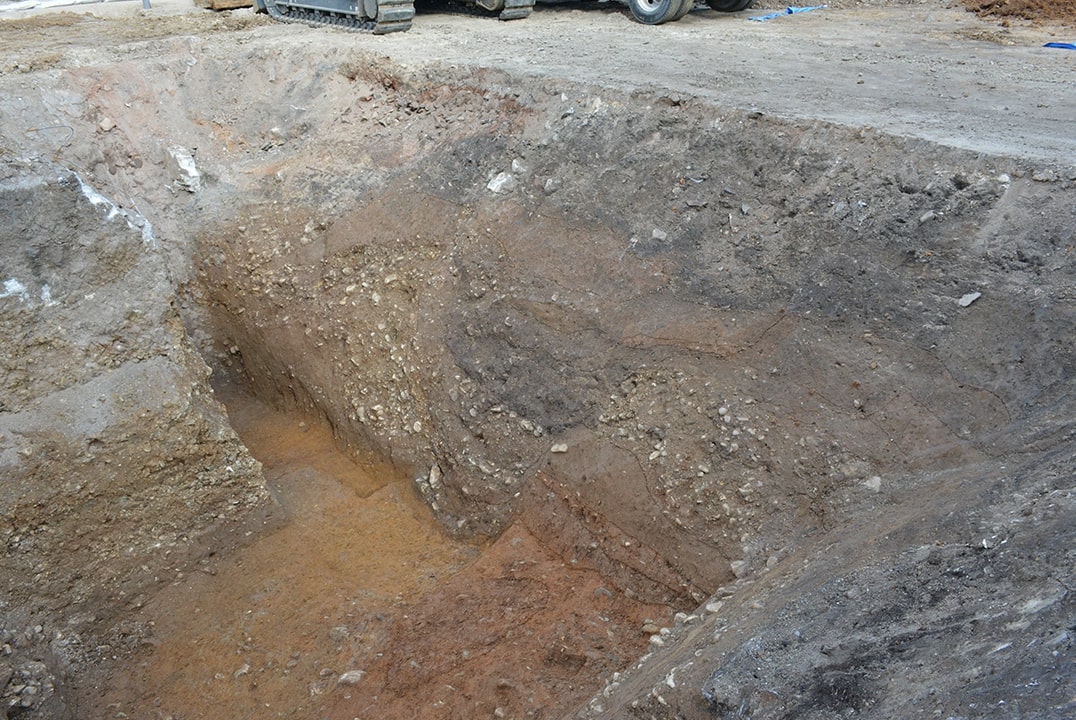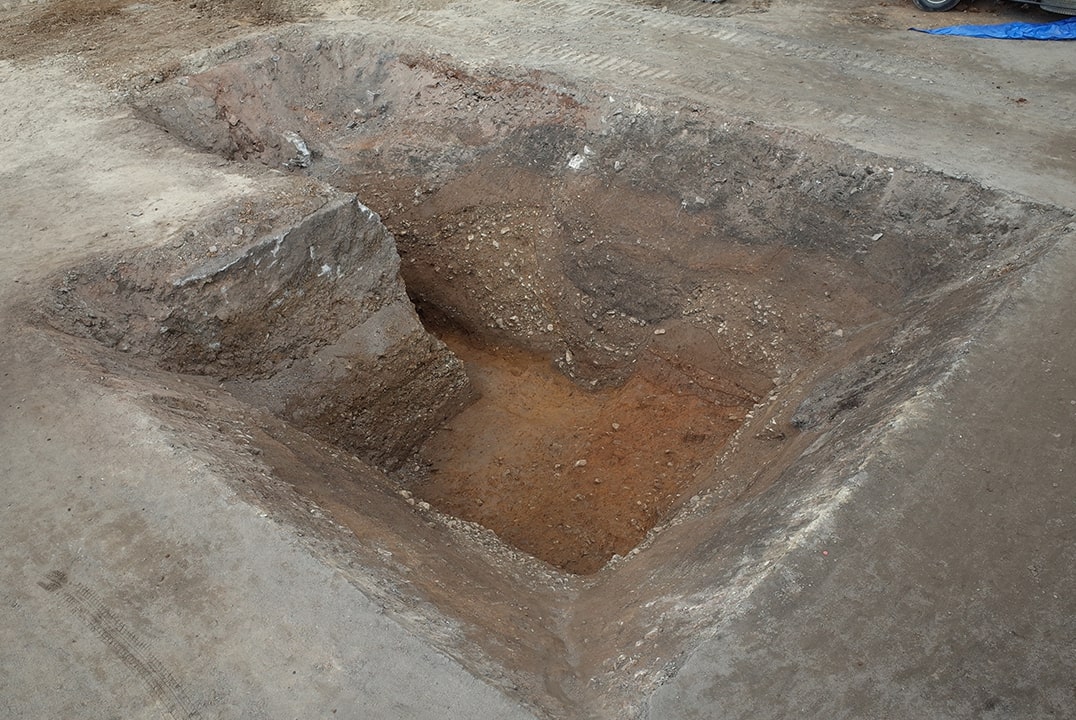Outer Moat of Okazaki Castle
Okazaki Castle’s precincts enclosed the castle and its’ town in protective earthen walls and moats. This major protective feature extended 1.5 km east to west, and 1km north to south. The outermost moat, known as a sogamae or sobori moat, was also called the Tanaka Moat, as it was constructed between 1590 and 1600 when the castle was commanded by Tanaka Yoshimasa. This section corresponds with the northern sections and a ccording to remaining illustrations, it is thought that an earthen wall was built inside the moat.
Excavations conducted in 2019 confirmed that defensive earthen walls standing about 1.7m in height had been built inside the moats, which were found to be at least 2.4m deep. It was also discovered that the moat was constructed along the old valley topography, extending from the northern edge of Mt. Kabuto.Inside the old moat along the Zaimoku-cho district, a large amount of iron scrap discharge from the refining and smithing of steel was discovered, suggesting m any blacksmiths worked in the area.
Okazaki Castle Outer Moat Enclosure >

Outer Moat of Okazaki Castle
Okazaki Castle’s precincts enclosed the castle and its’ town in protective earthen walls and moats. This major protective feature extended 1.5 km east to west, and 1km north to south. The outermost moat, known as a sogamae or sobori moat, was also called the Tanaka Moat, as it was constructed between 1590 and 1600 when the castle was commanded by Tanaka Yoshimasa. This section corresponds with the northern sections and a ccording to remaining illustrations, it is thought that an earthen wall was built inside the moat.
Excavations conducted in 2019 confirmed that defensive earthen walls standing about 1.7m in height had been built inside the moats, which were found to be at least 2.4m deep. It was also discovered that the moat was constructed along the old valley topography, extending from the northern edge of Mt. Kabuto.Inside the old moat along the Zaimoku-cho district, a large amount of iron scrap discharge from the refining and smithing of steel was discovered, suggesting m any blacksmiths worked in the area.



